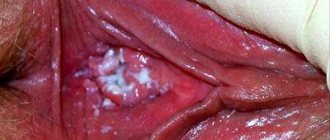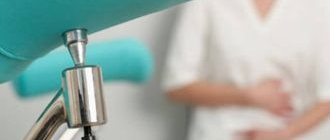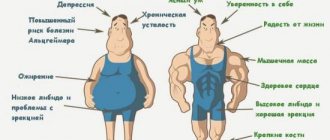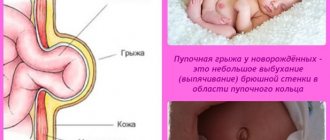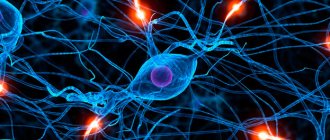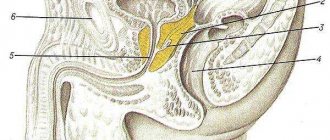If you're having a good day, feeling confident and cheerful, and then suddenly, perhaps after sneezing, coughing or laughing, you lose control of your bladder, it can cause panic and embarrassment. Urinary incontinence causes a lot of inconvenience and urine leakage can be humiliating, but modern medicine has different options to treat this problem in women after 40-50-60 years.
Although both men and women suffer from varying degrees of leakage, several factors unique to women increase the risk of developing this problem. The gynecologist at the Women's Health Center will talk about the different types of urinary incontinence that can affect patients of different ages, as well as the causes and what to do about it and how to minimize the impact it has on your life.
How to deal with urinary incontinence?
Urinary incontinence (enuresis) is a fairly common and delicate problem that causes serious psychological and physical discomfort.
The severity of enuresis varies, from a slight leakage of urine when coughing or sneezing to a sudden and very strong urge to urinate, which is difficult to resist in order to get to the toilet. Although bedwetting is more common in older people, it is not an inevitable consequence of aging. To get rid of this problem, in most cases it is enough just to change your lifestyle or undergo drug therapy.
Use of hygiene products
Treatment for enuresis is usually quite lengthy. Therefore, in order for the patient to feel comfortable during this time, the doctor may recommend using pads for men for urinary incontinence. After all, few people can afford to spend all their time at home, and such hygiene products will help avoid psychological discomfort.
The photo shows a mannequin in knitted panties with a urological pad
The advantages of urological pads include:
- Excellent absorption even of significant amounts of liquid.
- Elimination of unpleasant odor.
- They do not cause skin irritation or allergic reactions.
For elderly patients suffering from senile urinary incontinence, which is usually observed in men after 60-70 years of age, an adult diaper can be used. Such diapers are also used for bedridden patients.
Urinary incontinence - what is this disease?
Urinary incontinence or involuntary urination is a consequence of a violation of the proper functioning of the urinary system, which can have many causes.
Normally, the process of urination occurs as follows:
- While urine accumulates in the bladder, its walls are in a relaxed state and gradually stretch. The flow of urine at this time is prevented by the urethral sphincter - a tightly compressed circular muscle located at the bottom of the bladder;
- When 200–300 ml of urine has accumulated in the bladder, the nerve cells on its walls send the first signal to the human brain that it needs to be emptied. If there is no opportunity to urinate immediately, a person can hold back the urge for a while;
- when he becomes ready for this, the brain sends a signal to the muscles of the sphincter of the urethra and bladder. The urethral sphincter muscle relaxes, and the bladder muscle, on the contrary, begins to contract to push out urine.
With enuresis, a failure occurs at some stage of this process. Urinary incontinence can be caused by:
Urinary tract infections urinary tract infection (UTI);- constipation;
- taking certain medications (diuretics, antiallergics, antidepressants).
If you eliminate these factors, the process of urination will most likely improve. In other cases, urinary incontinence can be caused by:
- weakness or, conversely, hyperactivity of the bladder muscles;
- weak pelvic floor muscles;
- damage to the nerves of the bladder due to Parkinson's disease,
How to treat diabetes? diabetes mellitus, multiple sclerosis; - prostatitis (in men);
- obesity;
- age-related changes;
- childbirth and the onset of menopause in women;
- prolapse of the pelvic organs. When they are out of place, the proper functioning of the bladder is impaired, which can lead to urinary incontinence.
What is urinary incontinence?
There are several types of urinary incontinence:
- stressful - urine leaks out involuntarily when pressure in the abdominal cavity increases, for example, during
How to cure a cough? coughing, sneezing, laughing, or lifting heavy objects. Stress urinary incontinence can also be caused by hormonal imbalances, disruption of nerve conduction in the pelvic organs, or damage to the pelvic floor muscles. In women, this type of enuresis often develops after difficult childbirth, and in men - after surgery to remove the prostate; - Urgency incontinence is characterized by leakage of urine during a sudden and strong desire to urinate. This type of enuresis is caused by increased activity of the bladder muscles. Urgent urinary incontinence can occur due to diseases of the brain or spinal cord, damage or inflammation of the bladder wall;
- unconscious - a person does not feel the need to urinate when the bladder is full, so after a while it empties reflexively. The reason for urinary retention lies in the disruption of the conduction of nerve impulses from the bladder to the brain;
- complete incontinence - urine does not accumulate in the bladder and gradually leaks. Uncontrolled, constant leakage may be caused by impaired nerve conduction and/or malfunction of the sphincter;
- mixed, combining several types, for example, stressful and imperative.
Symptoms of deviation
The symptoms of enuresis in adults are directly related to the predominant form of the disorder:
- In stress incontinence, urine is leaked when a woman's abdominal muscles tense. In the initial stages, involuntary discharge of urine occurs if the bladder is full. In the future, even a slight load can provoke an involuntary act of urination - for example, walking at a brisk pace;
- In the imperative form, the urge to urinate is unbearable. They appear even when the bladder is only half full. The urge is frequent - up to 8 times a day. At night, the desire to empty the bladder also does not disappear. Leaking urine can cause skin irritation in the groin area;
- With iatrogenic incontinence, unpleasant manifestations are observed only during the therapeutic course. The symptoms stop bothering the woman as soon as the medication is stopped.
Manifestations of incontinence worsen the quality of life and significantly complicate the ability to perform work and usual daily activities. Urine leakage causes isolation, nervous breakdowns, and decreased self-esteem. In addition, incontinence increases the risk of exacerbation of existing diseases.
Causes of urinary incontinence in men
The causes of urinary incontinence in men depend on its type:
- Stress incontinence can develop after surgery to remove the prostate gland if the nerves or sphincter of the bladder were damaged during the procedure. When the function of the sphincter is impaired, urine may leak outward due to a sharp increase in pressure in the abdominal cavity;
- imperative (urgent) incontinence is caused by hyperactivity of the bladder muscles - they contract, pushing urine out so much that the sphincter cannot hold it;
- Overflow incontinence (unconscious) is caused by an obstruction to the flow of urine, most often due to an enlarged prostate gland (prostate adenoma) or a narrow urethra. Less commonly, this type of incontinence is caused by weak bladder muscles.
Urinary incontinence in men is often associated with prostate disease. Enuresis can be aggravated by alcohol abuse and taking certain types of medications (diuretics, antidepressants, sedatives).
Treatment
Treatment of urinary incontinence is selected individually for each patient, depending on the type and severity of the disease. Therapy begins with the simplest principles, gradually moving to taking special medications if there is no effect.
In many patients, bladder function returns to normal after giving up bad habits, as well as following a sleep-wake schedule and performing special physical exercises.
If treatment does not bring a positive result, the method of maintenance therapy is the use of special devices - an artificial sphincter or catheter. For some patients, the only treatment option is surgery.
Lifestyle
In some cases, the problem of incontinence can be avoided by simply limiting fluid intake. In this case, drinking in a certain volume is prescribed only at the appointed time, and the time for emptying the bladder is planned in advance. This treatment method is called “scheduled voiding” or “bladder training.” Therapy also involves performing Kegel exercises to strengthen the pelvic muscles.
Drug therapy
Medicines for the treatment of incontinence have different mechanisms of action:
- Alpha blockers (terazosin, tamsulosin, uroxatral)
used to treat incontinence caused by prostate enlargement and urinary tract obstruction. They help relax the muscles of the prostate gland, allowing normal urine flow and preventing abnormal bladder contractions that lead to the development of urge incontinence.
- 5-alpha reductase inhibitors (finasteride, dutasteride)
inhibit the production of male hormones that cause enlargement of the prostate gland. Taking these drugs helps to avoid problems associated with urination by reducing the size of the prostate to normal.
- Imipramine (Tofranil)
is a drug from the group of tricyclic antidepressants. It has a relaxing effect on the muscular system and blocks the transmission of impulses that cause bladder spasms.
- Neuromodulation
This is one of the innovative ways to treat urge incontinence and overactive bladder. The treatment is based on the use of electrical impulses to change the transmission of nerve signals along the fibers that regulate bladder contraction. There are two types of neuromodulation treatment: peripheral and sacral. Peripheral neuromodulation involves sending small electrical signals to the sacral nerves through a small needle placed in the ankle. This procedure is performed weekly and is called transcutaneous tibial nerve stimulation. The sacred method involves installing a special stimulator. This device sends signals directly to the nerves of the sacral region through a special implanted electrode.
- Antispasmodics. Relaxes the bladder muscles.
- Botox (onabotulinumtoxin A). This is a new treatment in which Botox is injected into the muscle layer of the bladder to prevent spasmodic contractions.
Surgery
Surgical treatment is the treatment of choice for patients whose bladder dysfunction is caused by nerve damage (spinal injury, total prostatectomy).
- Artificial sphincter
This device allows you to empty your bladder at any time you wish. This sphincter is implanted in the urethra and ensures its closure until the patient is ready to urinate.
This method helps to cope with incontinence caused by weakness of the sphincter muscles or damage to the nerve fibers responsible for their contraction. It does not have a positive effect on the course of the disease in patients with uncontrolled bladder contractions.
The sphincter consists of three parts: a cuff that fits around the urethra, a small reservoir that fits into the abdomen, and a pump that fits into the scrotum. The cuff is inflated with water, which provides a tight seal to prevent urine leakage.
If you need to urinate, just squeeze the pump with your fingers to deflate the cuff. At this time, fluid from the cuff flows into the reservoir, and urine flows freely into the urethra. When the bladder empties, the cuff automatically inflates within 2-5 minutes, closing the urethra again;
- "Straps"
This surgical method can improve the patient's condition in some forms of urinary incontinence. Installation of the “straps” involves stretching a strip of elastic material around the urethra and securing its ends to the pelvic bone. This allows you to maintain constant pressure on the urethra.
- Urine diversion
If it is necessary to remove the bladder, or if bladder function is completely lost due to nerve damage, surgical treatment may involve creating a urine outlet. The operation consists of forming a reservoir from a section of the intestine and bringing the urethra to it. A separate stage is the formation of a stoma - an opening in the lower abdomen through which urine is collected through a catheter into a special urinal.
- Supportive means
In addition to the methods described, there are also special supportive measures that can improve the quality of life of patients with urinary incontinence. One of them is absorbent pads for men, specially designed to be worn with men's underwear. All secretions are absorbed by them and turn into a gel, which ensures dryness and odorlessness. As an alternative to pads, diapers, special absorbent inserts and underwear made from absorbent material are also produced. There are several types of underwear available for men, including swimming trunks, boxers, long johns and disposable briefs.
- Clamps
External devices that allow you to save on the constant purchase of pads include penis clamps. They are placed on the penis and compress the urethra. Their use prevents the appearance of wet spots and allows you to control the process of urination.
Why does urinary incontinence occur in women?
Urinary incontinence is more common in women than in men because they are exposed to a significantly larger number of triggers throughout their lives:
- pregnancy - a hormonal surge can cause weakening of the pelvic floor muscle tone, and an increase in fetal weight often leads to the development of stress urinary incontinence;
- difficult, prolonged or rapid labor. Trauma to the perineum or rupture of the pelvic floor muscles can damage the nerve pathways and the integrity of the urinary canals. This can cause urinary incontinence even in young women;
- age-related changes. Due to the weakening of the muscle tone of the bladder walls and its involuntary contractions, which become more frequent with age, women may leak a small amount of urine;
- menopause. With its onset in a woman’s body, the production of estrogen, a sex hormone that helps maintain the health of the mucous membrane of the bladder and urethra, sharply decreases;
- Major gynecological operations, such as hysterectomy, can cause damage to the pelvic nerves responsible for maintaining the tone of the urethral sphincter or muscles that control the bladder.
Effective tablets
Tablets are effective for treating urinary incontinence. Today they are presented in pharmacies in a huge variety, so the doctor can choose them depending on the cause, type and stage of the disease.
Minirin
Minirin is often prescribed for the treatment of children and adults. This is a hormonal drug with high speed, and the effect lasts for 10 hours. In this case, the doctor selects the dosage individually. The course of treatment should not exceed 3 months. It can be repeated after a week's break.
Minirin normalizes kidney function, which allows you to minimize the amount of urine produced. The tablets should not be taken with water; they must be dissolved under the tongue.
Contraindications to taking the drug Minirin are the presence of:
- Congenital and psychogenic polydipsia.
- Heart pathologies.
- Obesity.
The drug is well tolerated, so side effects are rare. They can manifest as abdominal pain, nausea, and headaches.
Driptan
An effective medicine for adults and children over 5 years of age are Driptan tablets based on the active substance oxybutynin hydrochloride. The drug is able to increase the volume of the bladder by relaxing the detrusor muscle. Additionally, spasms are relieved and the frequency of contraction of the organ walls is reduced. This prevents premature urge to urinate. A positive result after administration is noted after 45 minutes. Driptan is used for urinary incontinence in the following cases:
- With an overactive bladder.
- Against the background of the development of cystitis.
- After bladder surgery.
Contraindications to the use of the drug are pregnancy and lactation. Treatment with Driptan is not carried out at elevated body temperatures, as well as at:
- Ulcerative colitis.
- Myasthenia Gravis.
- Astroesophageal reflux.
- Diseases of the colon.
The presence of serious contraindications does not allow making an independent decision about taking the drug. The doctor determines the dosage of the drug on an individual basis. Side effects may occur from the digestive system. They are manifested by nausea, vomiting, dry mouth, and abdominal pain. Drowsiness and headache may also occur. In severe cases, overdose may cause allergic reactions, arrhythmia, tachycardia, and visual impairment.
Pantocalcin
Positive reviews emphasize the effectiveness of the nootropic drug Pantocalcin, which has a wide spectrum of action. He is capable of:
- Eliminate vegetative disorders.
- Minimize urinary urgency.
- Increase bladder capacity.
- Reduce the number of urinations.
The dosage is calculated individually taking into account the patient's age. Take pills morning and evening. The duration of treatment is 60 days. Pantocalcin is not prescribed to children under 3 years of age. Contraindications are liver and kidney diseases. With a properly selected therapeutic course, stable remission or complete relief from the pathological condition is guaranteed. The drug is well tolerated, so side effects are rare. Sometimes increased irritability and absent-mindedness are noted.
In addition to tablets, suppositories can be used to treat urinary incontinence in women. They are considered effective for atrophy of the muscles of the genitourinary tract. This pathology usually occurs in older women during menopause due to changes in hormonal balance. Suppositories are administered vaginally before bedtime. If any side effects occur, for example, any discomfort in the vagina, they should be discarded.
It is impossible to do without medical help in the treatment of urinary incontinence. Consultation with a specialist is a guarantee that the problem will be resolved. Only a doctor will be able to determine the type of disorder and its causes, which will allow him to prescribe the correct treatment.
Can enuresis be cured?
Enuresis can be cured if the factor that triggered its development is found and eliminated. To find out the cause of incontinence, it will be necessary to conduct a comprehensive diagnosis, which may include both laboratory tests and hardware methods for examining the bladder (ultrasound,
Is it harmful to take an x-ray? X-ray and others). Based on the research results, the doctor will select an individual treatment regimen or minimally invasive treatment for urinary incontinence.
How to look for a reason
To cure incontinence, you need to identify its cause.
To find the right approach to treatment, an examination is necessary. It includes:
- urine tests: general, according to Nechiporenko, bacteriological;
- Ultrasound of the urinary system;
- uroflowmetry - a method of directly studying urination;
- vaginal examination with taking smears, including Papanicolaou tests - for women;
- PAD test - determination of the amount of urine lost.
Among other things, you will need to keep a diary. In it you need to record the amount of liquid consumed and the entire volume of urine excreted per day (for this you will temporarily have to use a vessel or jar).
Enuresis in adults: which doctor should I go to?
If you have a problem with urinary incontinence, you can contact your family doctor or general practitioner. He will help determine the possible cause of the development of this disorder, and, if necessary, refer you to a specialist (urologist, neurologist or gynecologist), who will conduct a diagnosis and prescribe a treatment regimen. If incontinence is not caused by physiological reasons, then a consultation with a psychotherapist may be required to identify possible psychological problems.
Diagnosis of the disease
In order to accurately diagnose urinary incontinence, you need to seek help from a gynecologist. The doctor will conduct an examination and prescribe the necessary tests.
Agnostics includes the following activities:
- Examination by a specialized specialist. Collection of medical history and complaints. The doctor prescribes keeping a special urination diary, which displays the volume and number of urinations per day.
- Gynecological examination (examination of the anatomical structures of the female reproductive system).
- Cough test. The study is carried out on a full bladder. The woman needs to cough or strain. If urination occurs after coughing, the test is considered positive.
- Uroflowmetry (a method for diagnosing urodynamics that involves measuring urinary flow). It is carried out strictly on a full bladder, using a special uroflowmeter device.
- Cystoscopy (examination of the surface of the bladder).
- Ultrasound (necessary for a more accurate visualization examination).
- A combined urodynamic study (CUDI) is necessary to determine the cause of urination.
Laboratory research
- Creatinine, urea - to assess the state of kidney function;
- General urine analysis;
- Blood test for the level of glycated hemoglobin;
- Flora smear;
- Cytological examination of the cervix.
At the Federal Scientific and Clinical Center of the Federal Medical and Biological Agency, you can undergo all the necessary diagnostics and laboratory tests in one day, which will significantly save your time. However, the list of studies can be changed depending on the indications and health status of the patient. The doctor will prescribe all the necessary procedures during a face-to-face consultation and, based on the results, will select the most optimal treatment method.
How is urinary incontinence treated?
To treat urinary incontinence, medications and non-drug methods (psycho- and physical therapy) are used. The choice of drug depends on the cause that provoked the development of enuresis. For infections of the genitourinary system, antibacterial therapy is prescribed; for hormonal disorders, hormonal drugs are prescribed. If stress is the cause of enuresis, antidepressants may be recommended. If the bladder is overactive, anticholinergic drugs are prescribed to help relax the bladder muscles.
In addition to drug therapy, your doctor may prescribe herbal infusions that improve the health of the urinary system. Physiotherapeutic techniques for enuresis include Kegel exercises aimed at strengthening the muscles of the pelvic floor and bladder. They can be done not only by women, but also by men.
Folk remedies for urinary incontinence
The use of folk remedies in the fight against urinary incontinence can hardly be called advisable, since they are often ineffective against this problem. It is better not to waste time and immediately consult a doctor who will find out the cause of enuresis and prescribe treatment.
The following recommendations can help people suffering from enuresis get rid of this problem or reduce its symptoms simply by changing their lifestyle. To get rid of urinary incontinence on your own, you need to:
- Do daily exercises to strengthen your pelvic floor muscles, such as Kegel exercises. It is important to do them correctly so as not to harm yourself. The first results will be noticeable in an average of 1.5 -3 months;
- quit smoking. Smokers are more susceptible to colds than others, and coughing puts stress on the pelvic floor muscles and increases pressure in the abdominal cavity, which provokes stress incontinence;
- replace high-intensity training with Pilates, a system of exercises that strengthens all the major muscles of the body;
- avoid lifting heavy objects;
- eat more foods containing fiber (vegetables, fruits, whole grains) and exercise daily to prevent
What to do if you are constipated? constipation; - reduce caffeine consumption - it irritates the walls of the bladder;
- reduce alcohol consumption, as it has a diuretic effect;
- Drink at least 6-8 glasses of water per day. Restricting fluid intake only makes urinary incontinence worse because it reduces bladder capacity;
- avoid spicy and sour foods, as they can irritate the bladder and worsen incontinence;
- reset
How much should I weigh for my height and age? excess weight, as fatty tissue puts pressure on the bladder.
Urinary incontinence is a sign of problems in the body. This pathology significantly worsens a person’s quality of life and forces him to avoid the company of other people, so he must be treated. Enuresis responds well to treatment, and in some cases, its symptoms can be eliminated with just a few changes in your lifestyle.
Recommendations
- You should limit as much as possible the consumption of foods that irritate the bladder. The most harmful products: coffee, alcohol, tomatoes, citrus fruits, spicy seasonings, milk, chocolate products.
- Smoking worsens the overall health of the body, tobacco tar is an irritant to the walls of the bladder, they destroy the mucous membrane that performs a protective function. This also affects problems with the bladder - enuresis appears.
- Do you suffer from chronic constipation? The condition of the intestines will also have to be improved - the collected feces presses on the walls of the bladder, reducing its tone. Normalize intestinal function, for example, with the help of foods (prunes, beets, apples, dried apricots). They should be consumed daily, or one at a time – not all at once!
- Difficulty passing urine often occurs due to bacterial infections entering the genitourinary system. Take care of the quality of personal hygiene of the genitals at home, try to wear underwear that is made of natural material.
- A common cause of the problem can be overweight (obesity), which weakens the pelvic floor muscles. Obesity should be combated immediately. How? There are many ways: do not overeat, eat low-calorie foods, exercise, etc.
For your information! A common mistake when dealing with the problem of uncontrolled urine output is to drink very little fluid (to avoid running to the toilet less). This approach is completely wrong, since dehydration will occur in the body, and the urine in this case will be too concentrated. This can lead to irritation of the mucous membranes, which will lead to another problem - vaginitis, urethritis. Drink as much water as you want!
Lingerie
When choosing underwear for urinary incontinence, it is important to consider several factors: the patient’s preferences, the causes and degree of urinary incontinence, the person’s physical capabilities, and the availability of outside help. Today, many models of both disposable and reusable panties are produced, differing in size, shape, and absorption capacity. They are quite comfortable and protect against leaks. Disposable panties, or adult diapers, are used for severe cases of illness, bedwetting, and for bedridden patients.
Gaskets
For mild to moderate urinary incontinence, women use regular panty liners or sanitary pads for menstrual periods. However, there are special urological pads for disposable and reusable use. Disposable ones are convenient and practical, but are quite expensive. Reusable ones are a little cheaper, but they need to be washed and dried. They are used with special underpants, to which they are attached. The sizes of urological pads vary depending on the volume of fluid they absorb.
Yes, the problem of urinary incontinence is unpleasant and difficult, but with some effort and perseverance, it can be overcome. A set of folk methods and remedies, muscle training and drug treatment will definitely do their job. Be healthy!

